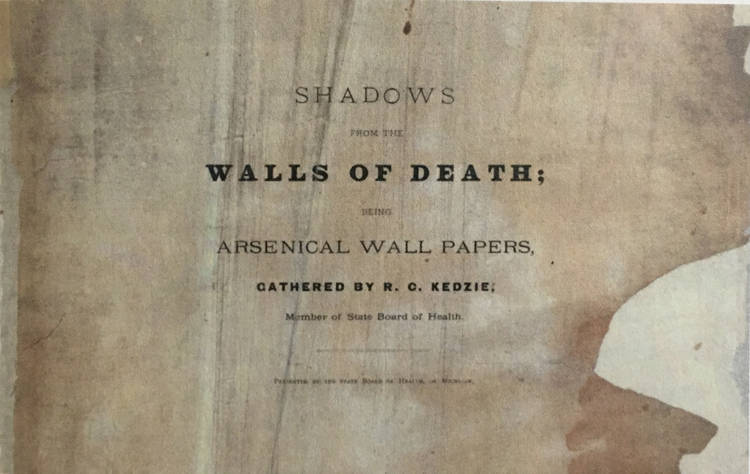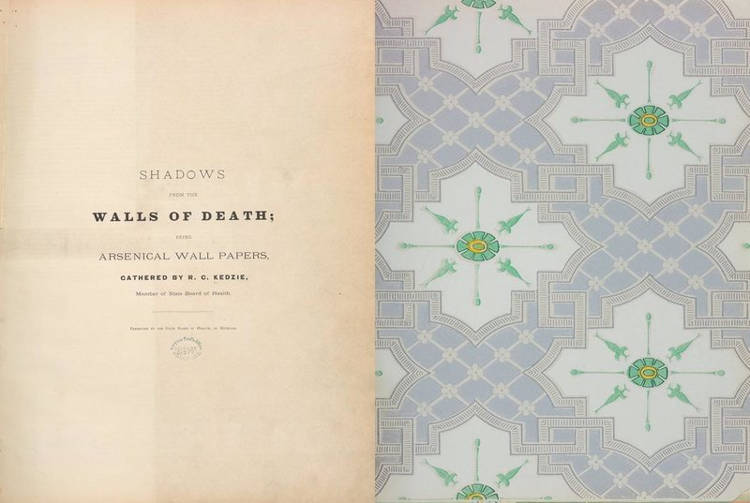When people speak of potentially-deadly books, they usually refer to the radical or controversial ideas they contain, but in the case of one very scary book, the potential for lethalness is quite literal.
Shadows from the Walls of Death: Facts and Inferences Prefacing a Book of Specimens of Arsenical Wall Papers is a book published in 1874 by Dr. Robert M. Kedzie, a Union surgeon during the American Civil War who later became a professor of chemistry. Of its 100 or so pages, 86 are just samples of arsenic-pigmented wallpaper that people used to decorate their homes during those times. Even though arsenic was a known toxin capable of killing a person if ingested, no one imagined it could kill even when used as an active ingredient to make wallpaper colors more vibrant. Kedzie did, though, so he printed this book as a warning.

At the end of the 19th century, about 65 percent of all wallpaper in the United States contained arsenic, and Dr. Kedzie already knew something that would later become scientific fact – that, over time, the wallpaper-decorated walls released this poison that slowly killed inhabitants. Arsenic ended up in the air, in food, on people’s hands, it made them sick, and sometimes killed them.
As part of an effort to raise awareness about the mortal danger of arsenic-laden wallpaper, Robert M. Kedzie produced 100 copies of Shadows from the Walls of Death and sent them out to public libraries across Michigan, along with a note explaining the purpose of the book and a warning to librarians not to let children touch the pages.

The book Shadows from the Walls of Death numbered dozens of arsenic-infused wallpaper samples Kedzie had obtained from merchants and served as a warning to anyone who looked at it. But doing that was in itself a potentially-deadly affair, as the pages were contaminated with the poison. In fact, when Kedize’s theories were proven correct, most libraries that had received copies of it had them destroyed, deeming them too dangerous for the public.
Out of the original 100 copies of this amazing book, only four are still around today. Two remained in Michigan, Dr. Kedzie’s home state (one at Michigan State University and the other at the University of Michigan), one ended up at Harvard University Medical School and the fourth is at the National Library of Medicine, which also scanned it and made it available online.
Handling and even storing copies of the Shadows from the Walls of Death is a challenging affair. Before having each page encapsulated in plastic film, in 1998, the copy at MSU could only be touched by people wearing special gloves. There were all kinds of restrictions regarding the period of time it could be left out for, and people had to be careful not to touch anything else while wearing the gloves, let alone lick their fingers…
Although Dr Kedzie’s campaign to raise awareness about arsenic-infused wallpaper was reported to have poisoned one lady who examined the book, it was widely seen as an effective way of publicizing the dangers of living in a home plastered with the deadly decorations.
Sources: Circulating Now, Atlas Obscura, University of Michigan












